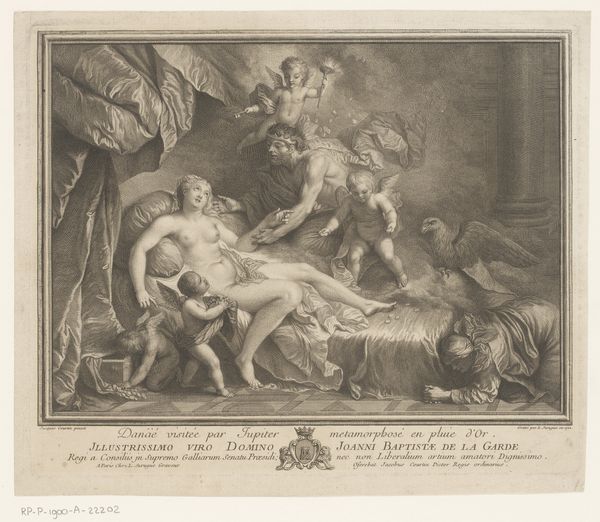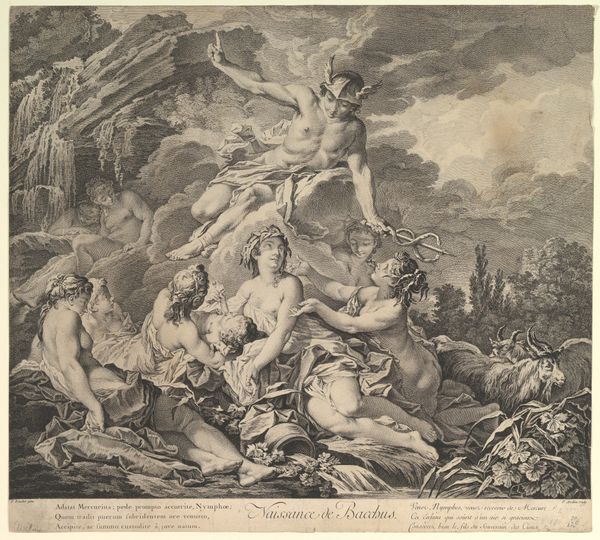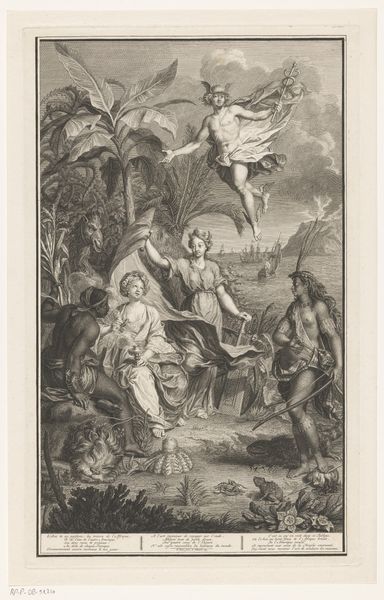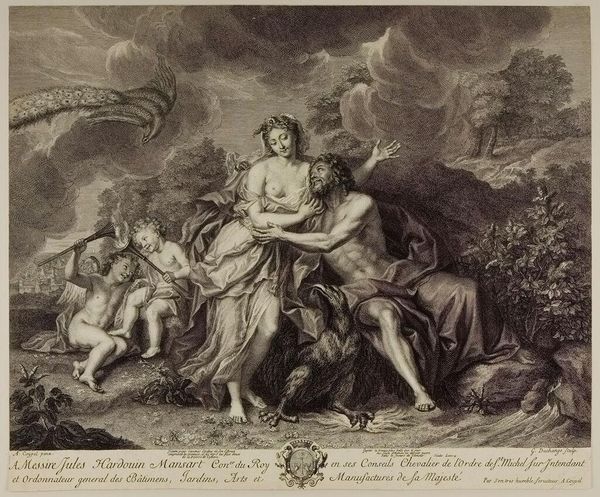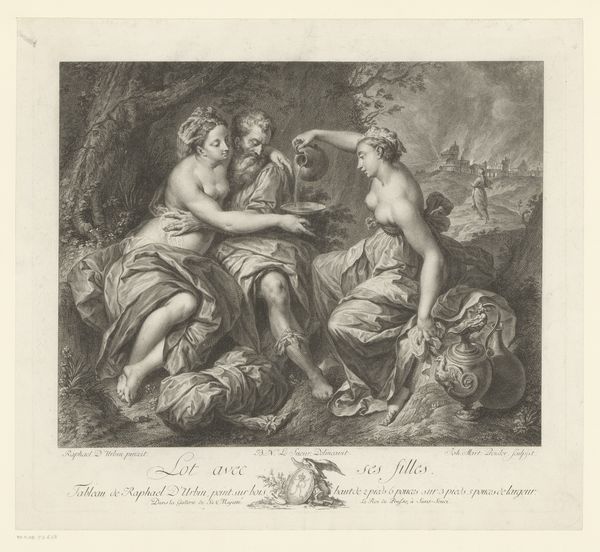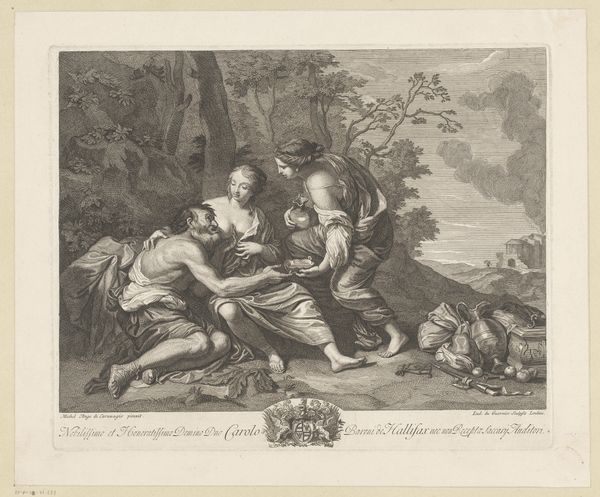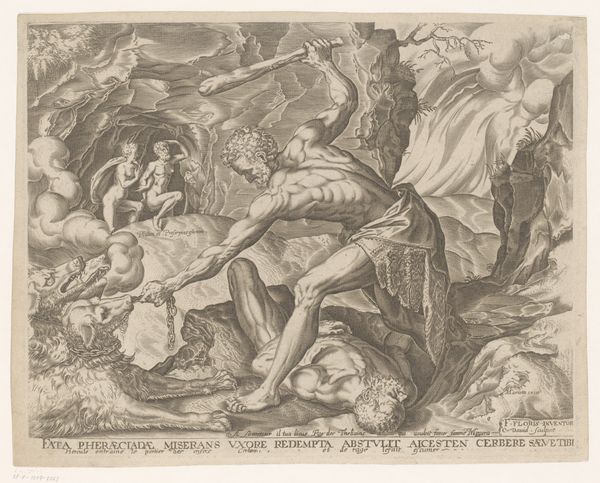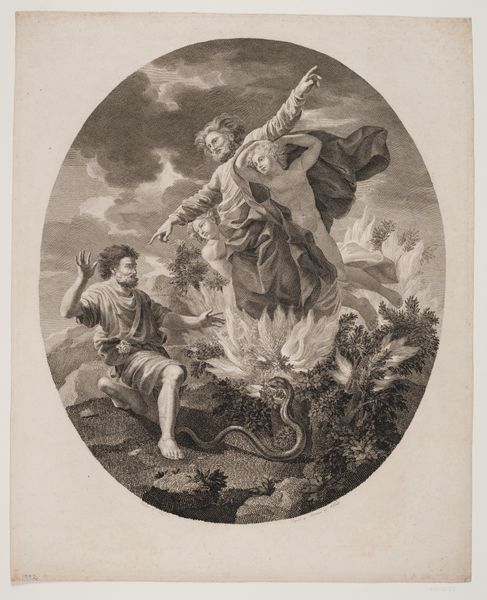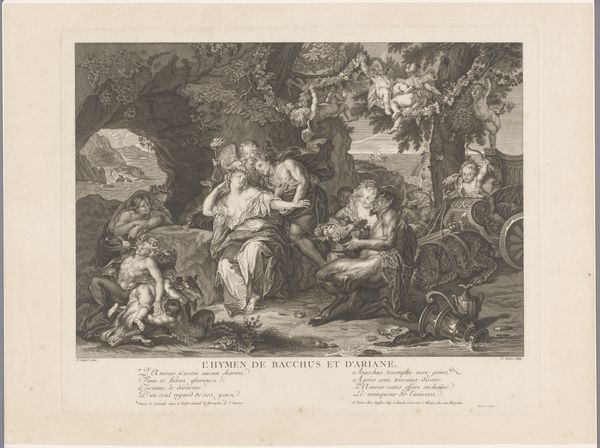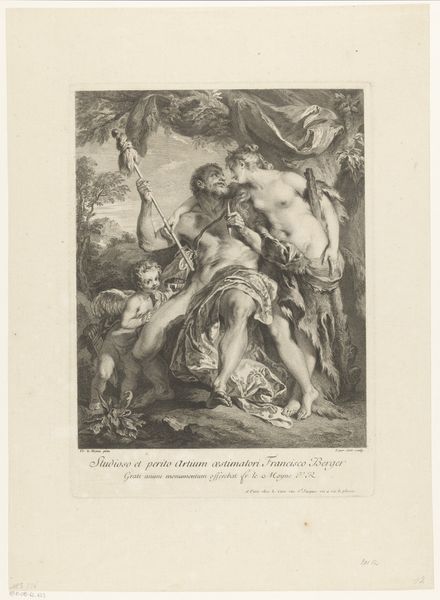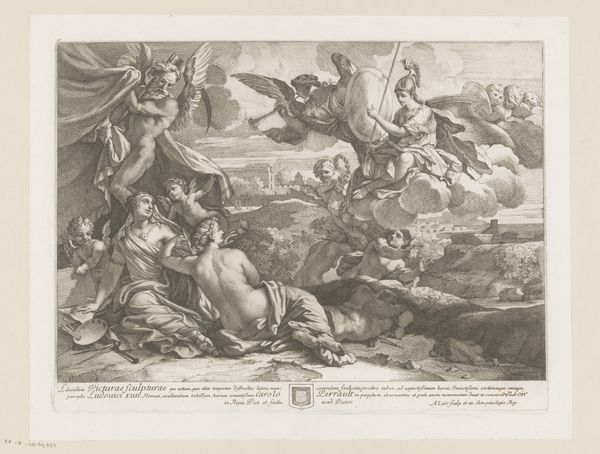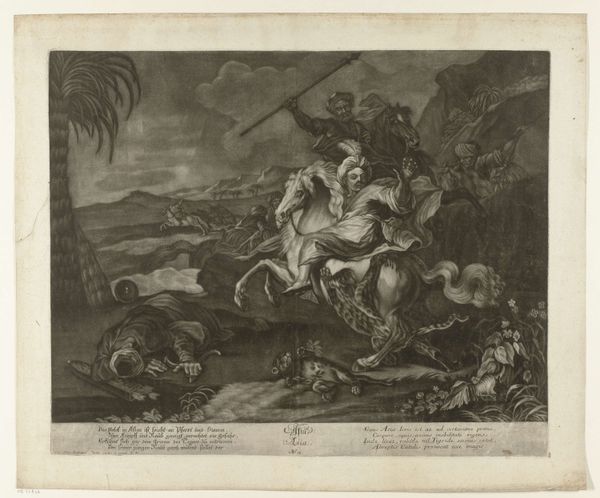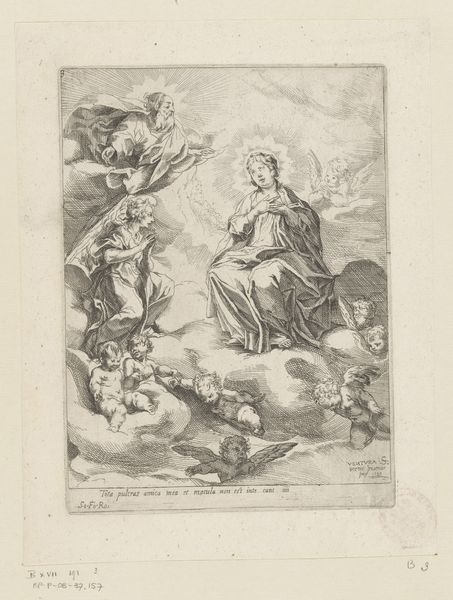
print, engraving
#
baroque
# print
#
old engraving style
#
figuration
#
history-painting
#
engraving
Dimensions: height 384 mm, width 466 mm
Copyright: Rijks Museum: Open Domain
Curator: This engraving, dating from 1672-1708, depicts Jupiter Juno liefkozend by Gaspard Duchange, found here at the Rijksmuseum. Editor: There's an ethereal quality to this Baroque print. The contrast between the light figures and the heavily etched sky is striking. Almost dreamlike, really. Curator: Absolutely. Notice how Duchange uses cross-hatching to create a sense of depth and volume. It’s masterful engraving work for creating textures, the musculature of Jupiter, the drapery of Juno’s robes, and even the feathers of the peacock overhead. Editor: It’s not just texture but tonality as well; it’s difficult and painstaking labor, scratching the copperplate with a burin, and that comes through. This reproduction speaks volumes of its social context - courtly love and power are the clear objectives behind commissioning such engravings. It presents classical subjects elevated with this particular artisanal approach to reproduction and distribution, thereby becoming both art object and valuable token. Curator: Indeed, we observe classical allegories transformed through the engraver's sharp, refined process. Juno and Jupiter become paragons of serenity and status, presented as ideals rather than intimate representations, with smooth gradations that guide the gaze, almost ignoring musculature under such fine details that the engraver used to indicate them! Editor: Though classical forms get flattened by Baroque aesthetics. Everything points to a self-aware demonstration of its reproductive technique to its affluent audience. Engravings held sway because they reproduced messages far and wide across an emerging capitalist landscape... they're meant to show off Duchange's talents, Juno’s beauty, and Mansart’s good taste, a whole assemblage of Baroque labor right there on paper. Curator: A truly captivating piece, with the ability to encapsulate broader societal shifts alongside its aesthetic merits, Duchange’s choices show us more than technique alone. Editor: Right, by analyzing the material and considering Duchange’s craftsmanship we understand social intentions that go further than meets the eye, such objects and techniques shaped perception of nobility’s power and aesthetic sensibilities then, and even today.
Comments
No comments
Be the first to comment and join the conversation on the ultimate creative platform.

